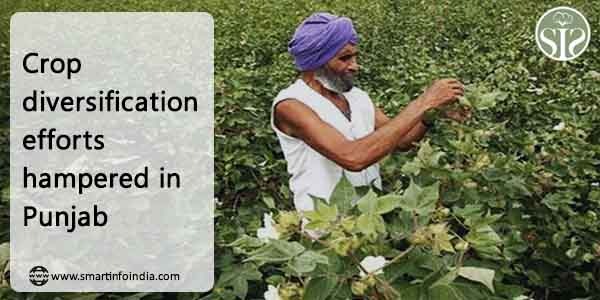
Crop diversification efforts hampered in Punjab
Officials said state officials had set a target of bringing 3 lakh hectares under cotton in the 2023-24 kharif cycle, but they could not even come close to last year's figure, when 2.47 lakh hectares were sown in the Malwa region. I went.
The state's director of agriculture, Gurvinder Singh, said a sharp decline in cotton acreage in the semi-arid region in the state's southwest region would lead to a shift to water-intensive rice cultivation. Basmati was sown in 4.6 lakh hectares in 2022 and the area could go up to 7 lakh hectares after cotton acreage came down, as farmers look to take advantage of the handsome returns from the aromatic rice variety, he said.
“Climatic conditions played spoilsport this year as wheat harvesting was delayed due to rains in April. Again unseasonal rains delayed cotton sowing in the later weeks of May. The farmers' confidence was shaken after two consecutive unsuccessful crop seasons, due to adverse climatic conditions and outbreak of pests.
The director said that the department is planning to solve problems on short, medium and long term challenges in crop diversification.
“Unlike in 2022, the area under summer moong decreased due to delay in wheat harvesting. Diversification of crops is the key and we are creating a viable system where farmers adopt sowing of different crops with some encouragement from the government. An upcoming state agriculture policy will address the challenges before crop diversification," he said.
According to official figures, Bathinda had set a target of expanding the area under cotton to 80,000 hectares this season from 70,000 hectares in 2022-23.
“But it stopped at 40,000 hectares as farmers lost faith in cotton cultivation. In the last two consecutive seasons, cotton yield was severely affected due to infestation of deadly pink bollworm and whitefly. The loss of 30,000 hectares or 75,000 acres would go towards paddy cultivation. After suffering huge financial losses during the past few years, farmers are eyeing an assured income from growing non-basmati varieties, Bathinda Chief Agriculture Officer Dilbag Singh said on Sunday.
Similarly, officials expected cotton area in Mansa to increase from 47,000 hectares in 2022 to 60,000 hectares this year. But data says farmers have sown cotton only on 26,000 hectares in the district.
Of the traditional cotton area, about 10,000 hectares is expected to come under basmati in Sardulgarh and Bhikhi blocks, Mansa Chief Agriculture Officer (CAO) Satpal Singh said.
According to Muktsar CAO Gurpreet Singh, the department worked to increase the area under cotton from 33,000 hectares to 50,000 hectares, but farmers have shifted away from the traditional crop this season.
“Contrary to expectations, Muktsar could barely touch 19,000 hectares. Despite ensuring timely canal water and distribution of subsidized seeds, farmers opted to abstain from sowing the region's traditional kharif crop. Our extension teams worked hard but the cotton growers were not convinced. We are hopeful that cotton growers will shift to Basmati crop.
With 90,000 hectares under cotton, Fazilka recorded half of the total area under the crop in Punjab this season.
“Farmers in the arid region of Abohar in Fazilka have little option but to sow cotton. Whereas in the rest of the area, wherever irrigation facilities were better, farmers shifted away from cotton.
Moong cultivation officials said the hasty political decision to promote moong in 2022 had a direct impact on legumes and cotton this year. “Green gram is a host plant of the deadly whitefly and it was not sown in the districts of south-west Punjab as the pest attack had caused huge losses in cotton production. In 2022, the state government announced to buy moong at MSP and diversification was seen to increase by 26% as compared to the previous year. But the promotion of the bean led to a widespread outbreak of whitefly, forcing the government to push mung bean into the cotton-growing region," said an official.
Another agriculture department official said that out of 4.05 lakh quintals of beans produced last year, only 14% was procured at MSP, farmers have not shown much interest in sowing moong this time. “The data shows that this time, the area under the pod was a mere 21,000 hectares which is less than half of what it was in 2022. Since most of the crop was procured below the MSP, farmers felt discouraged to sow green gram ," They said.